UPDATE UK Fixed Line Home Broadband ISP Speeds Hit 14.7Mbps Says Ofcom
Ofcom has published its latest biannual report into the real-world performance of fixed line broadband ISP speeds in the United Kingdom, which found that the average internet download rate had climbed to 14.7Mbps (Megabits per second) and that’s up from 12Mbps six months earlier (+22%). But rural areas continue to suffer from slow speeds.
Unfortunately the Digital Speed Divide between urban and rural areas shows little sign of closing. The average download speed for urban areas now comes in at 26.4Mbps (up from 21.4Mbps last year), while sub-urban areas saw 17.9Mbps (up from 13.2Mbps) and rural folk get just 9.9Mbps (up from 5.9Mbps). Elsewhere the average upload speed reached 1.8Mbps (up from 1.4Mbps in November 2012).
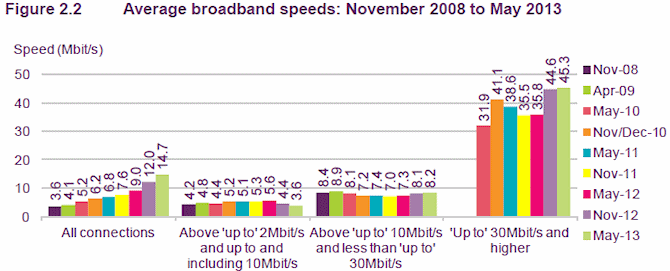
The primary reason for this rural vs urban divide is because rural homes often connect via longer copper lines (slower speeds via ADSL) and are usually last to benefit from upgrades to the latest access technologies (sparse populations are often commercially unviable for BT). So far the commercial roll-out of superfast broadband (25-30Mbps+) services has tended to focus on urban areas, which means that this performance gap has only widened.
Claudio Pollack, Ofcoms Consumer Group Director, said:
“We are yet to see the full effect of Government measures to improve broadband availability in rural areas, which should also help to boost speeds. We also anticipate 4G mobile to have a positive effect on mobile broadband availability across the UK.”
The government’s plan to spend £1.2bn of state aid (not including the match-funded contributions from the EU and local authorities) on making superfast broadband available to 95% of the United Kingdom by 2017 could help to close the gap. But the related rollout has only just begun and the most remote rural areas will still have to wait awhile before they see the benefit.
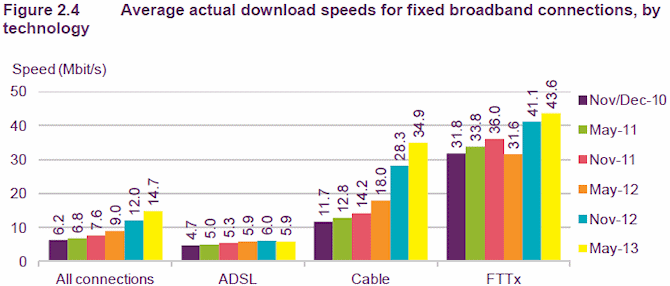
Meanwhile the proportion of broadband connections classed as “superfast” (i.e. offering an “advertised speed” of 30Mbps+) is also on the increase and has now hit 19% of residential broadband connections (up from 14% in November 2012).
The table above clearly shows how Virgin Media’s “cable” and BT’s FTTC/P technologies (not to mention similar FTTx services from KC, Digital Region, Hyperoptic and others etc.) have also continued to push average speeds upwards. In particular last year’s FTTC upgrade from a headline rate of 40Mbps to 80Mbps and Virgin’s double speed programme have clearly had an impact.
It’s particularly interesting to see how this performance breaks down between the major ISPs (below). But it should be noted that no data for EE, Sky Broadband or TalkTalk’s superfast fibre broadband (FTTC) services have been included, which is largely due to limited uptake and thus a lack of viable test data.
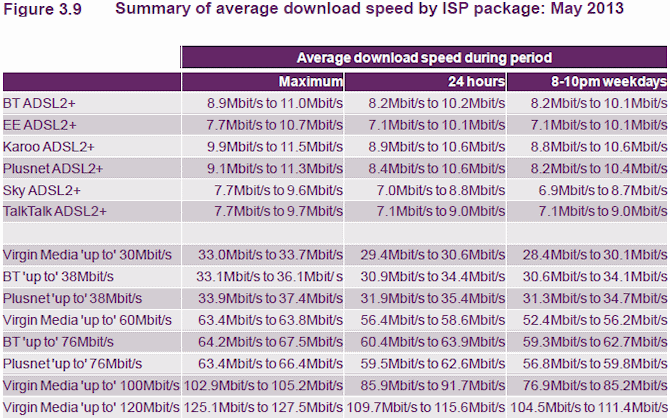
Of the 14 ISP packages included in the report, Virgin Media’s 120Mbps package achieved the fastest download speeds (average of 112.6Mbps) but BT and PlusNet’s FTTC based packages weren’t too shabby either. It’s also interesting to note that PlusNet appears to be one of the strongest, at least among the bigger ISPs, for older ADSL2+ products.
Claudio Pollack, Ofcoms Consumer Group Director, added:
“With the average household now owning more than three types of internet-connected devices, consumers are demanding more than ever from their broadband service. Internet providers have responded by upgrading customers to higher speed services and launching new superfast packages.”
In total the packages listed in Ofcom’s report accounted for more than half of UK residential broadband connections during May 2013, although it should be noted that the regulators results are based off the installation of special monitoring routers (SamKnows) in 2,218 homes around the country (these performed 736 million separate tests on the various ISP connections). A somewhat limited sample size.
The regulator now states that it will “shortly” also be publishing new research into whether ISPs need to improve the information they provide on Traffic Management policies, which is also a key requirement of the new EU proposals to “Safeguard” an open internet and Net Neutrality (here).
Ofcoms UK Fixed Line Broadband Speed Study (May 2013 Data)
http://stakeholders.ofcom.org.uk/../Fixed_bb_speeds_May_2013.pdf
UPDATE 11:41am
It’s worth pointing out that the ASA’s guidelines for tackling misleading promotions of “up to” broadband speeds (full summary) also requires ISPs to “demonstrate that [their] advertised speeds are achievable by at least 10% of users“.
Meanwhile people who do suffer serious speed problems can sometimes get help through Ofcom’s Voluntary Broadband Speeds Code of Practice (Version 2), which requires member ISPs (Listed Here) to explain to new customers the access line speed that they’re likely to achieve at home, and to try to resolve any problems when speeds fall significantly below the estimate.
If the speed problem cannot be resolved then customers should be able to leave their provider, without penalty, within the first 3 months of a contract.
Mark is a professional technology writer, IT consultant and computer engineer from Dorset (England), he also founded ISPreview in 1999 and enjoys analysing the latest telecoms and broadband developments. Find me on X (Twitter), Mastodon, Facebook and Linkedin.
« The Best UK Student Broadband and Phone Solutions for a New Term
Latest UK ISP News
- FTTP (5557)
- BT (3523)
- Politics (2545)
- Openreach (2307)
- Business (2272)
- Building Digital UK (2248)
- FTTC (2049)
- Mobile Broadband (1981)
- Statistics (1792)
- 4G (1673)
- Virgin Media (1629)
- Ofcom Regulation (1470)
- Fibre Optic (1398)
- Wireless Internet (1395)
- FTTH (1382)

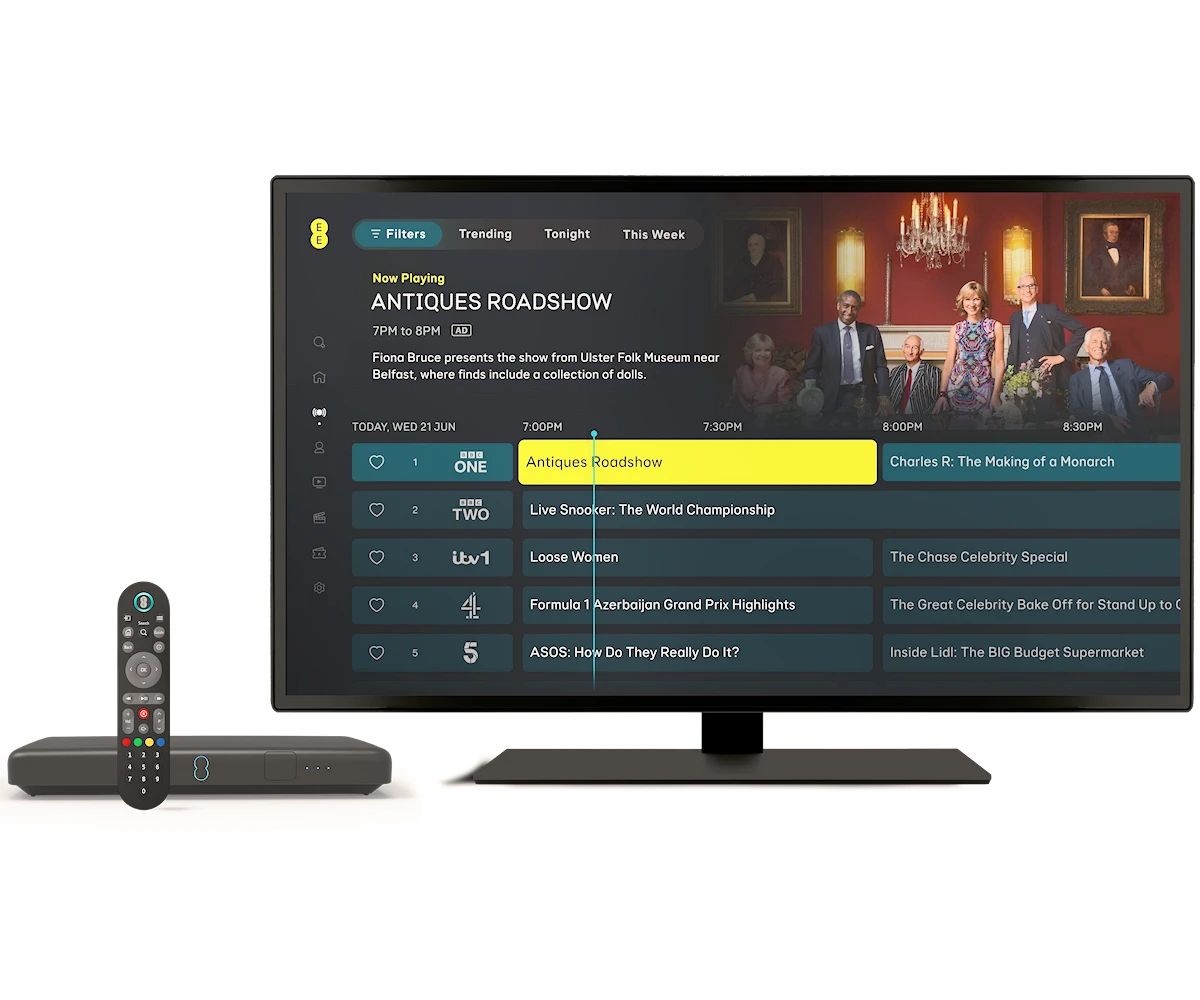



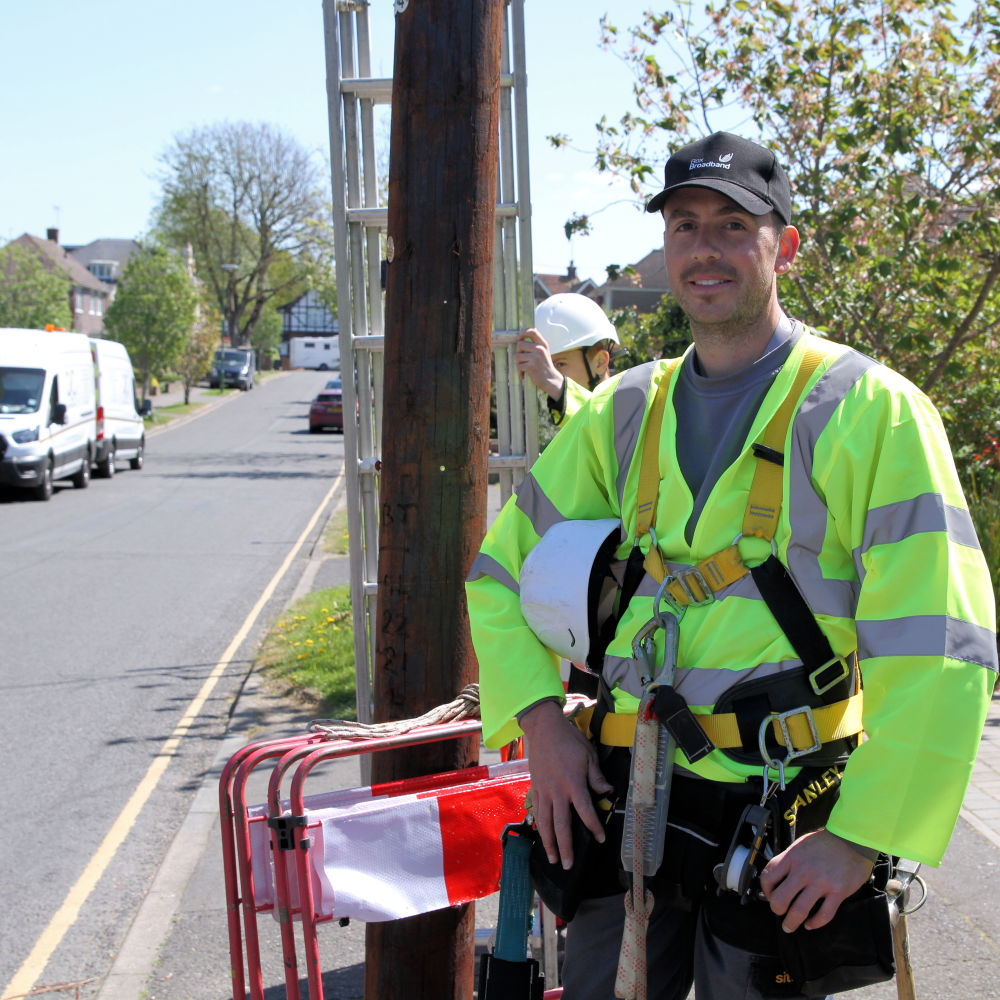
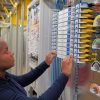
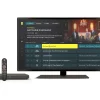


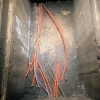







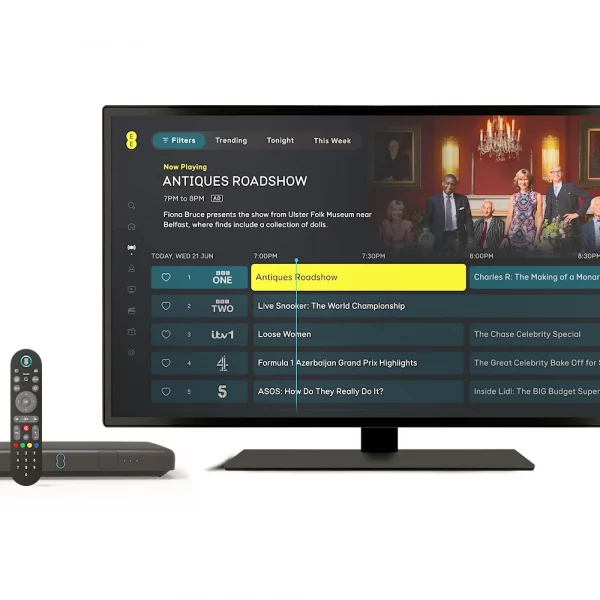



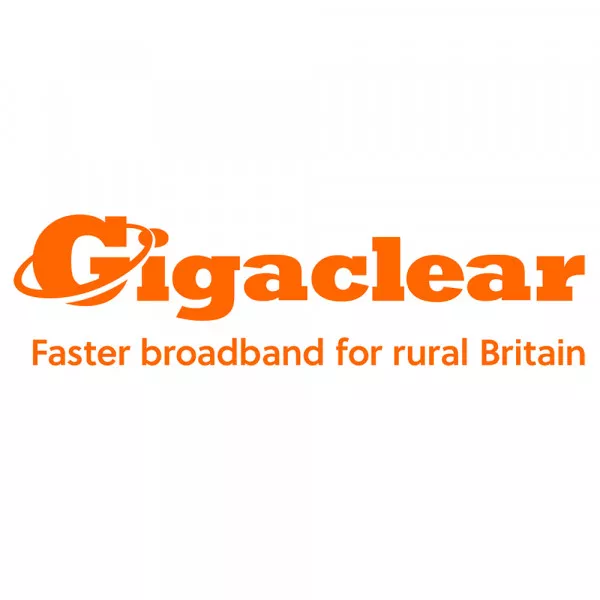






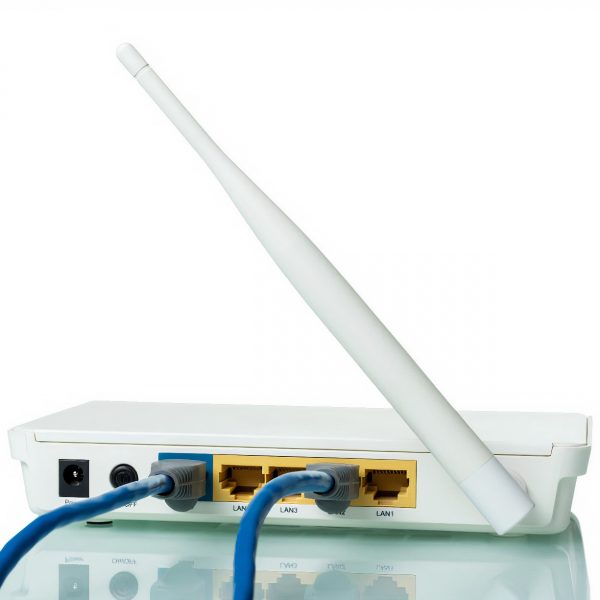
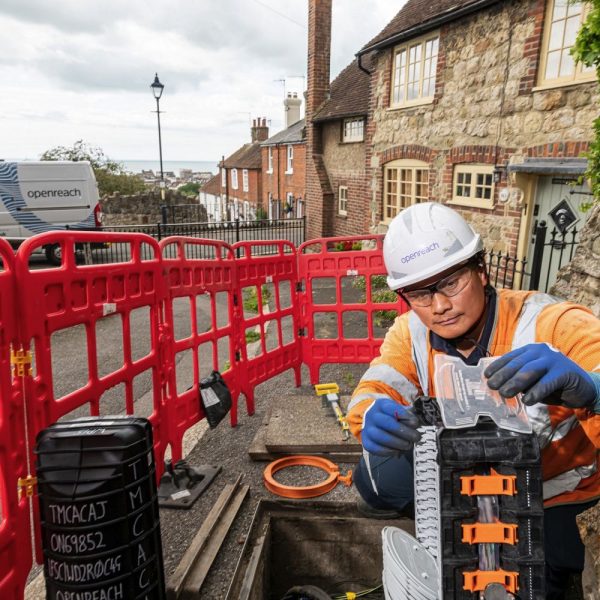

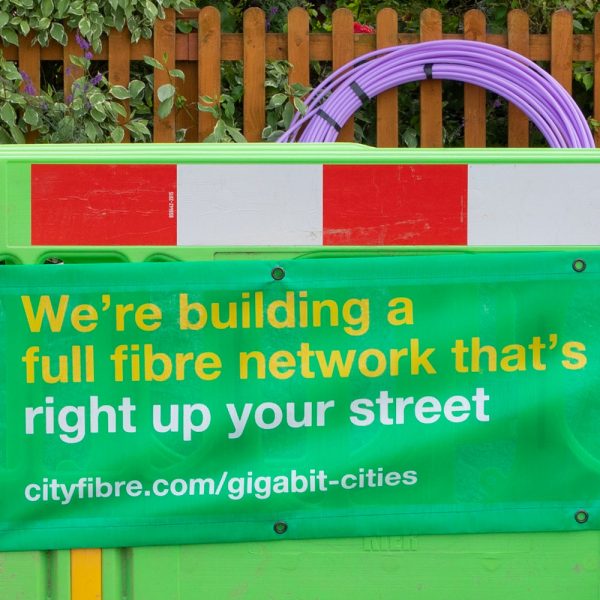
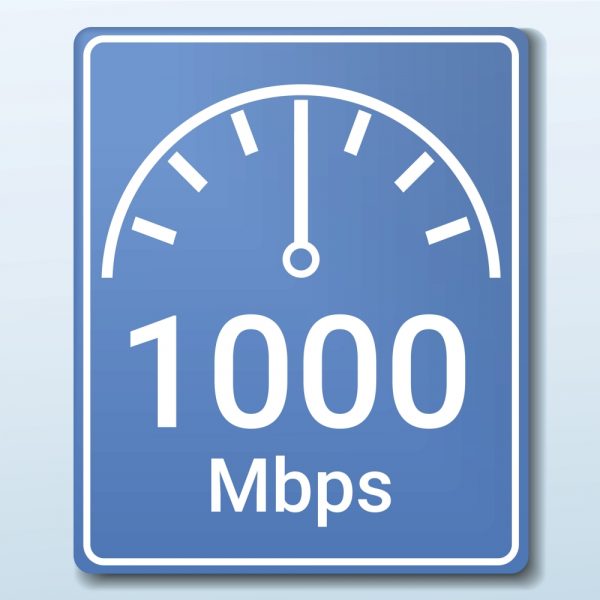
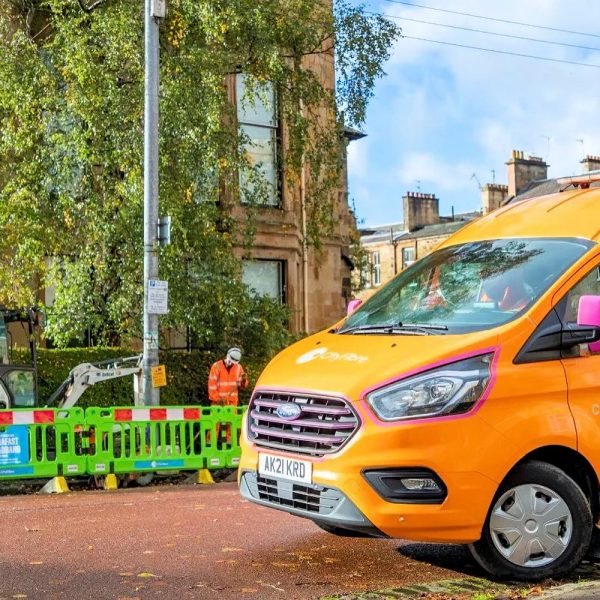


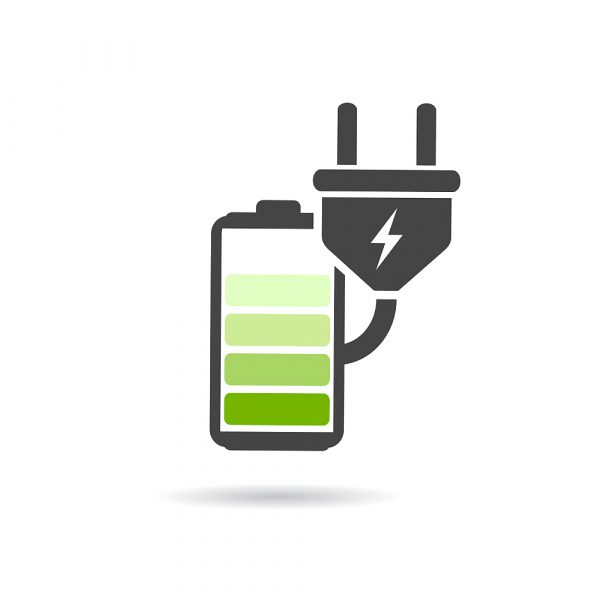
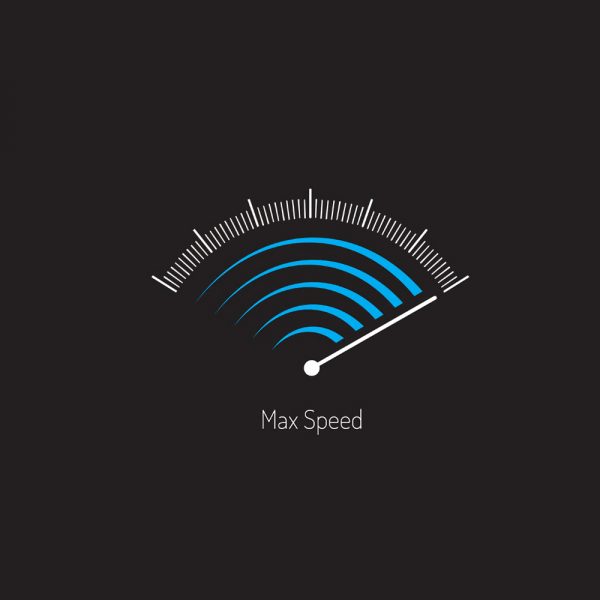





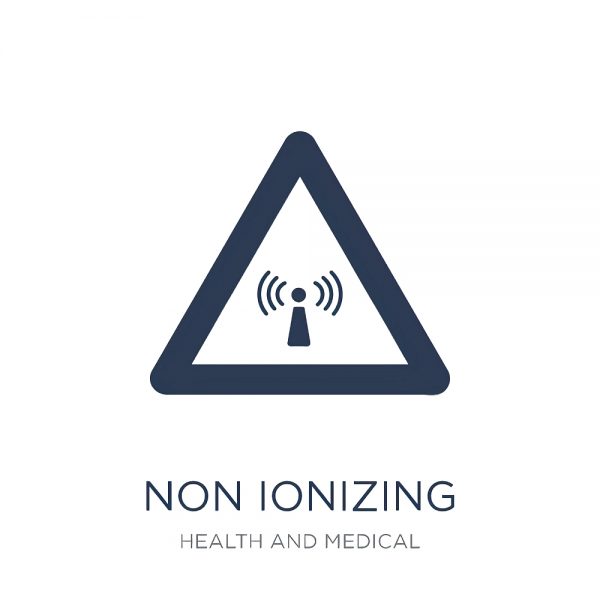
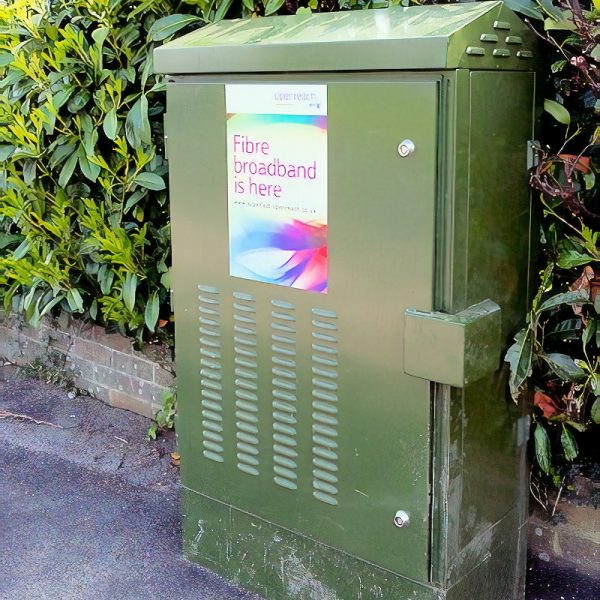







Comments are closed